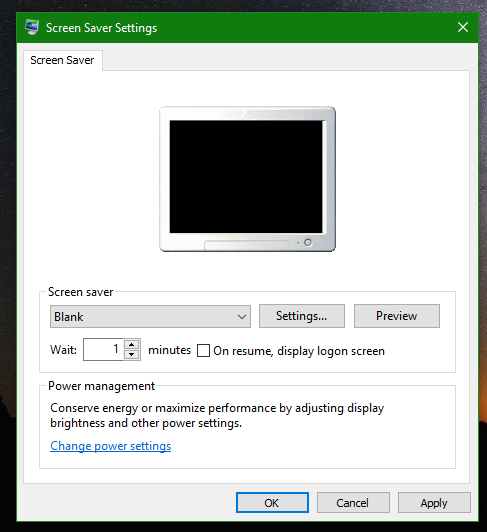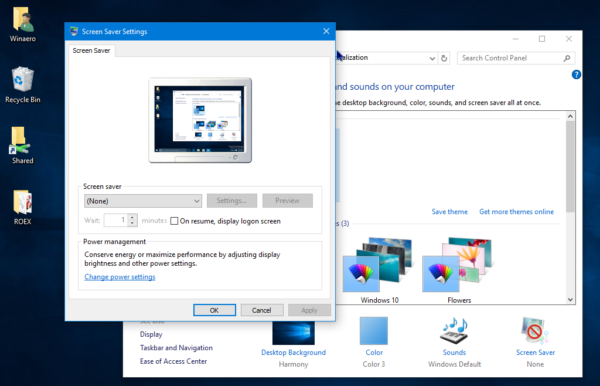For security reasons, you might want to lock your Windows 10 PC automatically when you step away from it. In this article, we will see how it can be done. No third party tools are required. Actually, it can be done in older versions of Windows too.
Advertisеment
While many system timeout settings are set through the power management applet in the classic Control Panel, there is no option there to lock your Windows 10 computer automatically. You can configure the operating system when to hibernate, when to turn off the disk drive and when to turn off the display.
The PC locking feature has always been implemented in Windows through screen saver settings. Although in Windows 10, the steps to access Screen saver options are confusing because of the new Settings app, it is still possible to access screen saver options and configure them to lock the PC after a certain period of time. Follow the instructions in that article and after selecting a screensaver, check the "On resume, display logon screen" checkbox.
If you are running some recent Windows 10 build for Insiders, you can access classic Personalization options. You might be already knowing that classic themes and Personalization UI which were originally removed now work again since Windows 10 build 10547. At the moment of this writing, the most recent release, Windows 10 build 14376, still comes with these options:
However, if you are running the RTM build, Windows 10 build 10240, the Personalization window looks empty! In this case, press Win + R shortcut keys together on the keyboard to open the Run dialog. In the Run box, type the following:
control desk.cpl,,1
Tip: See the ultimate list of all Windows keyboard shortcuts with Win keys.
- Now, as mentioned earlier, select any screen saver installed on your PC. It can be any screen saver, even the simple "Blank" screen saver which is shipped with Windows for many years.

- Enable the option On resume, display logon screen:

- Adjust the desired period of time before the screen saver starts.
For example, if you selected "Blank" as your screen saver and set the "Wait:" option to 5 mins, the screen saver will be started after your PC is completely idle without any mouse, keyboard or touch input for 5 minutes. Your PC will also be locked so after you dismiss the screen saver, you will be prompted to enter your credentials to continue.
That's it.
Support us
Winaero greatly relies on your support. You can help the site keep bringing you interesting and useful content and software by using these options:

